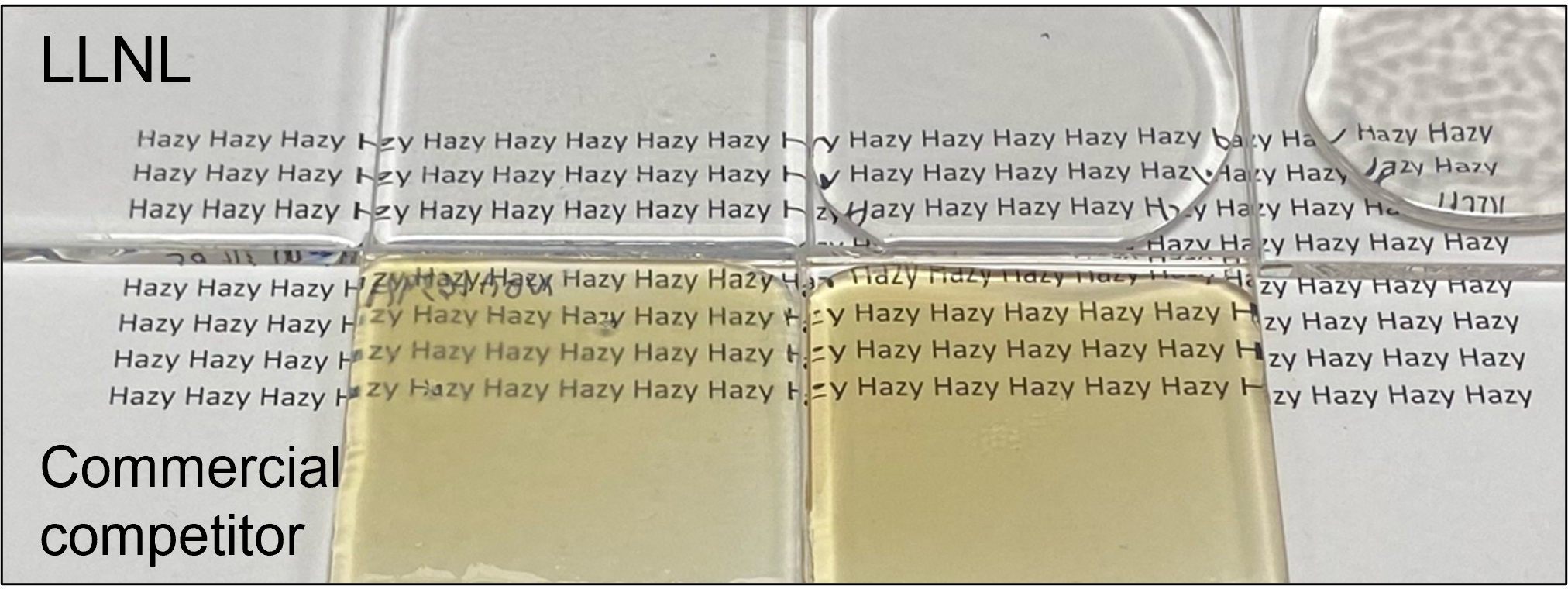For lasers that use high refractive index (RI) gain media (1.55 or above) there is a limited selection of optically transparent adhesives with matched refractive index to clad the components that also could absorb stress during operations (e.g., cure or harden to a suitable shore A hardness). In the past, LLNL researchers working in National Ignition Facility (NIF) found there was only one commercially available adhesive that has a similar RI of 1.64 but this material did not cure easily, and when it did was far too soft and often did not hold components together. Subsequent comparable adhesives released by the same company were lacking; these adhesives were yellow in color or were single component mixtures, thus having relatively short shelf lives.
The optical adhesives available in the market are composed of acrylates and zirconia based on their Safety Datasheets (SDS). In the technical literature, thiol-epoxies with various structures, thiol-urethanes, or acrylates have been mentioned for adhesive bonding of optical elements, but some do not achieve the desired RI, while others that do have an appropriately high RI are either unsuitably colored or too stiff. It would appear that the available adhesives were designed for LED lens or displays; LLNL researchers saw there a need for optically clear adhesives tailored for laser cladding processes. For this laser application, a high refractive index is required to prevent internal reflection of parasitic oscillation light so it can be quenched in the cladding glass cemented around the laser amplifier slab.
LLNL researchers have created a suitably compliant adhesive that is based on a thiol monomer mixed with an epoxy monomer in the presence of metal oxide nanoparticles. When cured into films or pucks, the adhesives are optically transparent with a RI up to ~1.68 at 532 nm with varying shore A hardness in the range of 50 to 98. The adhesive can potentially be mixed and potted between Ti:Sapphire (or other high index laser amplification glass) and a cladding (light absorbing glass) to suppress parasitic oscillation. LLNL’s approach to optical adhesive formulation allow for the tuning of desired hardness as well as high refractive index such that the laser amplifier assembly adhesive can absorb stress during operation while also helping to suppress parasitic oscillation.
Image Caption: Comparative photos of LLNL metal oxide nanoparticle (MONPs) loaded optical adhesive formulations vs commercial offerings using the same MONPs (~1 mm thick films).
- Tunable high RI from 1.57-1.68 at 532 nm
- Tunable shore A hardness
- Optically transparent and colorless over RI tunable range.
- Thermoset, but potentially UV curable.
- Can make thick >1 mm films to use as a “cushion” between optical components during extreme condition operating environment.
Laser cladding applications, LEDs, optical displays, other high power lasing applications where optical components with different rates of thermal expansion need to be adhered together.
Current stage of technology development: TRL 3
LLNL has filed for patent protection on this invention.


